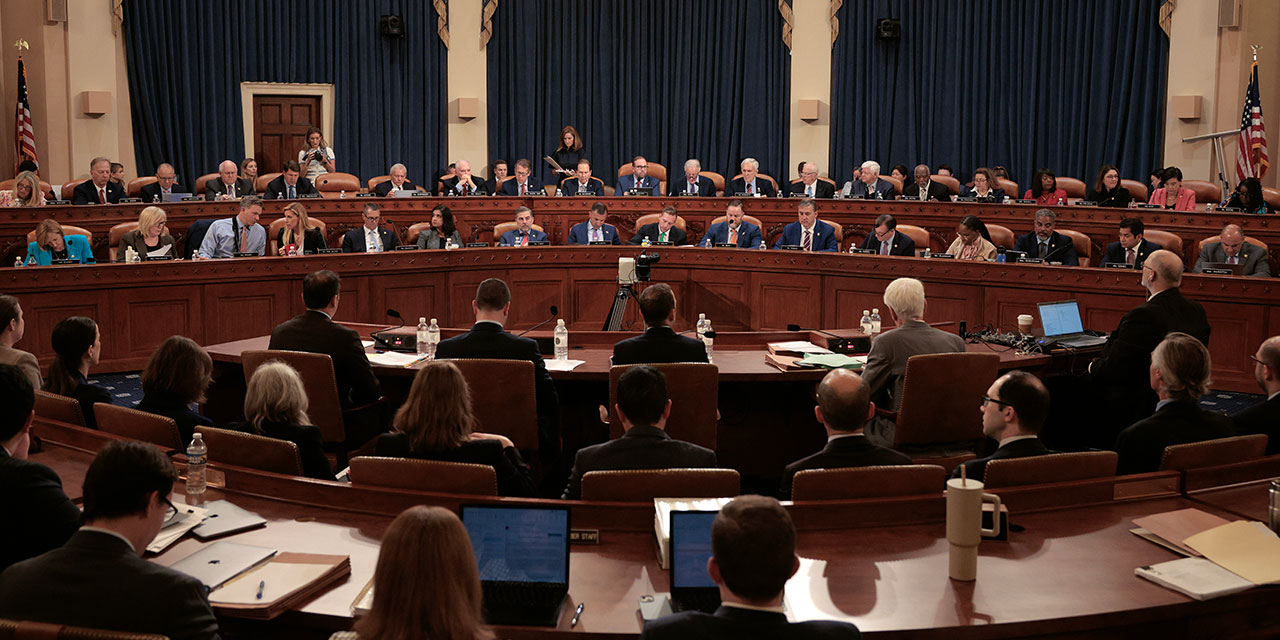
The House of Representatives has just passed President Trump’s “One Big Beautiful Bill,” marking a critical step in the Republican tax agenda. At first glance, the bill might appear to complete the legacy of the 2017 Tax Cuts and Jobs Act. But it falls short of emulating the TCJA’s core strengths in two key respects: it doesn’t prioritize economic growth, and it doesn’t simplify the tax code.
Though the TCJA wasn’t perfect, it struck several pro-growth bargains. Its authors were right to prioritize making the 21 percent corporate tax rate permanent, while accepting, as a budget compromise, that individual tax cuts would expire at the end of 2025. Unfortunately, the law also made 100 percent bonus depreciation for short-lived assets—another key pro-investment provision that lets companies immediately deduct equipment and machinery—temporary. It also introduced research and development (R&D) amortization, which penalizes investment by forcing companies to spread R&D deductions out over several years. Still, the 21 percent corporate rate was a major boost for growth and competitiveness and locking it in was crucial.
Finally, a reason to check your email.
Sign up for our free newsletter today.
This time, four key pro-investment provisions are on the agenda: returning to full expensing for R&D, reintroducing 100 percent bonus depreciation for short-lived assets, changing interest deductibility limitations, and a new proposal to introduce 100 percent bonus depreciation for some long-lived assets—structures for manufacturing, agriculture, and energy production. Just making those four provisions permanent would, according to the Tax Foundation’s modeling, boost long-run GDP by 1 percent and cost $629 billion over a decade.
Unfortunately, the bill introduces (or reintroduces) those key pro-growth provisions as temporary, while making the major individual income tax changes permanent and layering on a slew of mostly temporary other changes. As a result, the bill would reduce revenues by $4 trillion while boosting long-run GDP by just 0.6 percent. American incomes, measured by GNP, would barely rise, since higher deficits under the bill would lead to increased interest payments on debt held by foreigner creditors.
That’s right. The just-passed bill would do less for growth than a standalone package focused solely on making four key business provisions permanent—and it would cost more than six times as much. Permanence for both the individual tax reforms and the investment deductions is an achievable goal. But when the two were in tension, the TCJA’s authors prioritized pro-investment incentives. The authors of this new bill have not.
The bill also falls short of the TCJA’s approach to simplification. The TCJA streamlined individual income taxes through several key changes. It reduced itemized deductions using both carrot and stick—raising the standard deduction while capping the deduction for state and local taxes (SALT), tightening the mortgage interest deduction, and eliminating several smaller deductions. It also raised the threshold for the alternative minimum tax, sparing millions of taxpayers each year from effectively having to file twice.
The TCJA wasn’t perfect on simplification. Many of its changes are set to expire, and the law introduced the 20 percent pass-through deduction, which brought with it a range of complexities and design flaws. Still, on balance, the TCJA left behind a tax code that was simpler than the one it replaced.
To its credit, the new bill makes most of the TCJA’s individual reforms permanent and repeals several green-energy subsidies from the Inflation Reduction Act. But unlike the TCJA, it clutters the tax code with a range of temporary tax breaks. Many of the presidential campaign’s silly season ideas (no tax on tips, no tax on overtime, an auto-loan deduction) have found their way in. And instead of another silly season idea (exempting Social Security income from tax), the bill offers a clunky expansion of the additional standard deduction for seniors.
The new bill gets some things right, including the push for permanent individual tax provisions. But its priorities are misaligned, and it adds needless complexity. There’s still time to do better.
Photo by Chip Somodevilla/Getty Images
City Journal is a publication of the Manhattan Institute for Policy Research (MI), a leading free-market think tank. Are you interested in supporting the magazine? As a 501(c)(3) nonprofit, donations in support of MI and City Journal are fully tax-deductible as provided by law (EIN #13-2912529).
Source link

















